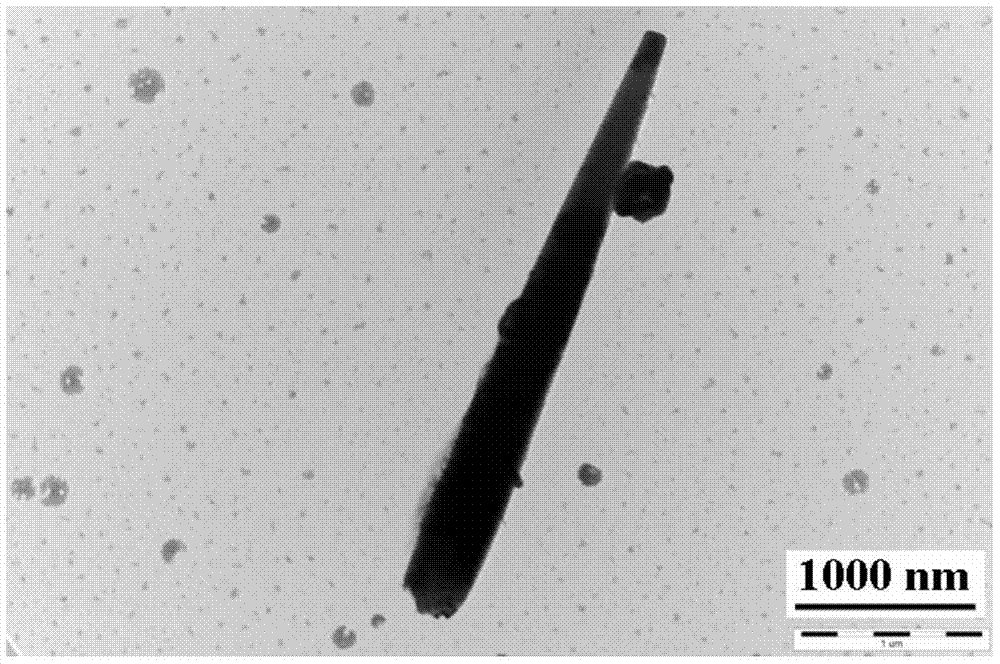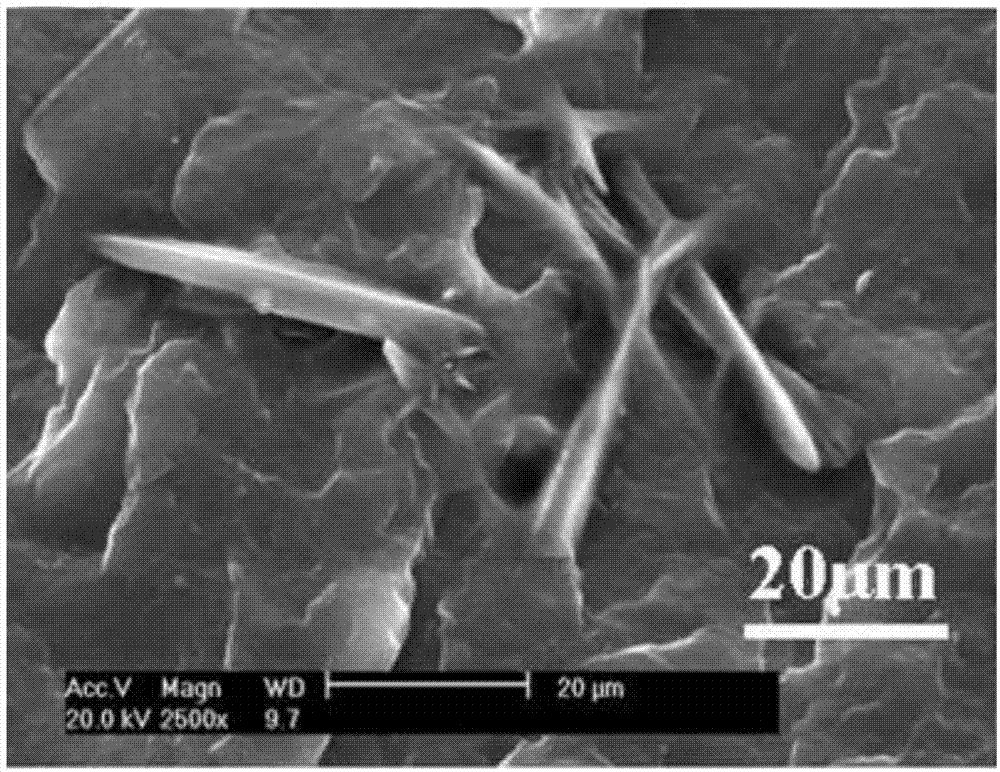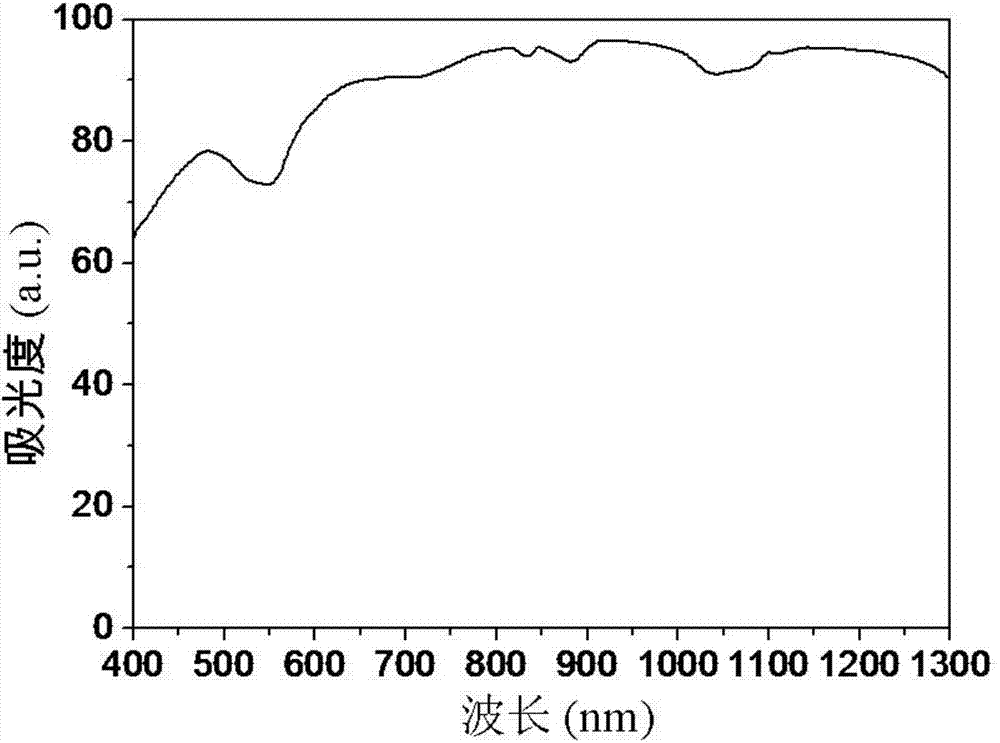Functional synthetic fiber capable of removing formaldehyde and preparation and application of fiber
A synthetic fiber and functionalized technology, which is applied to functionalized synthetic fibers containing rod-shaped zinc oxide/bismuth oxyhalide and their preparation and application fields, can solve problems such as reducing photocatalytic efficiency, widen the scope of application, and solve recycling and recycling problems. The effect of using difficult problems and avoiding secondary pollution
- Summary
- Abstract
- Description
- Claims
- Application Information
AI Technical Summary
Problems solved by technology
Method used
Image
Examples
Embodiment 1
[0031] 1g Zn(Ac) 2 2H 2 O was dissolved in 40 mL of distilled water, then 2 mL of NH 3 ·H 2 O, get a white suspension, then transfer it to a 250mL round bottom flask, heat it in a water bath at 60°C for 10h, centrifuge, collect the white precipitate, wash it alternately with 50mL water or 50mL absolute ethanol for 4 times each time, and place it at 60°C The rod-shaped zinc oxide was obtained after drying for 48 hours; the length of the obtained rod-shaped zinc oxide was 2-3 μm, and the diameter was 200-400 nm; the weight loss at 900 ° C was 1 wt % (the thermal gravimetric analysis was carried out using the SDT-Q600 thermogravimetric analyzer of TA Company in the United States). Re-test, heating rate 10℃ / min, in N 2 atmosphere), has the advantages of rod-like structure and good thermal stability, and is an excellent carrier for various inorganic nanoparticles.
[0032] Will wait for 1mol of Bi(NO 3 ) 3 ·5H 2 O and 1mol of KCl were successively dissolved in 250mL of ethyl...
Embodiment 2
[0035] 1g Zn(Ac) 2 2H 2 O was dissolved in 200 mL of distilled water, and then 3 mL of NH 3 ·H 2 O, the white suspension was obtained, then transferred to a 250mL round bottom flask, heated in a water bath at 95°C for 9h, centrifuged, and the white precipitate was collected, washed alternately with 50mL of water or 50mL of absolute ethanol for 4 times, and washed at 95°C The rod-shaped zinc oxide was obtained after drying for 24 hours under the hood; the length of the obtained rod-shaped zinc oxide was 2-3 μm, and the diameter was 200-400 nm; the weight loss within 900 ° C was 2 wt % (the thermal gravimetric analysis was carried out using the SDT-Q600 thermogravimetric analyzer of TA Company in the United States). Re-test, heating rate 10℃ / min, in N 2 atmosphere), has the advantages of rod-like structure and good thermal stability, and is an excellent carrier for various inorganic nanoparticles.
[0036] Will wait for 1mol of Bi(NO 3 ) 3 ·5H 2 O and 1mol of KBr were suc...
Embodiment 3
[0039] 1g Zn(Ac) 2 2H 2 O was dissolved in 160 mL of distilled water, and then 4 mL of NH 3 ·H 2 O, the white suspension was obtained, then transferred to a 250mL round bottom flask, heated in a water bath at 90°C for 8h, centrifuged, and the white precipitate was collected, washed alternately with 50mL of water or 50mL of absolute ethanol for 4 times, and washed at 90°C The rod-shaped zinc oxide was obtained after drying for 24 hours; the length of the obtained rod-shaped zinc oxide was 2-3 μm, and the diameter was 200-400 nm; the weight loss at 900 ° C was 1 wt % (the thermal gravimetric analysis was carried out using the SDT-Q600 thermogravimetric analyzer of TA Company in the United States). Re-test, heating rate 10℃ / min, in N 2 atmosphere), has the advantages of rod-like structure and good thermal stability, and is an excellent carrier for various inorganic nanoparticles.
[0040] Will wait for 1mol of Bi(NO 3 ) 3 ·5H 2 O and 1mol of KI were successively dissolved ...
PUM
| Property | Measurement | Unit |
|---|---|---|
| Length | aaaaa | aaaaa |
| Diameter | aaaaa | aaaaa |
| Specific surface area | aaaaa | aaaaa |
Abstract
Description
Claims
Application Information
 Login to View More
Login to View More - R&D
- Intellectual Property
- Life Sciences
- Materials
- Tech Scout
- Unparalleled Data Quality
- Higher Quality Content
- 60% Fewer Hallucinations
Browse by: Latest US Patents, China's latest patents, Technical Efficacy Thesaurus, Application Domain, Technology Topic, Popular Technical Reports.
© 2025 PatSnap. All rights reserved.Legal|Privacy policy|Modern Slavery Act Transparency Statement|Sitemap|About US| Contact US: help@patsnap.com



